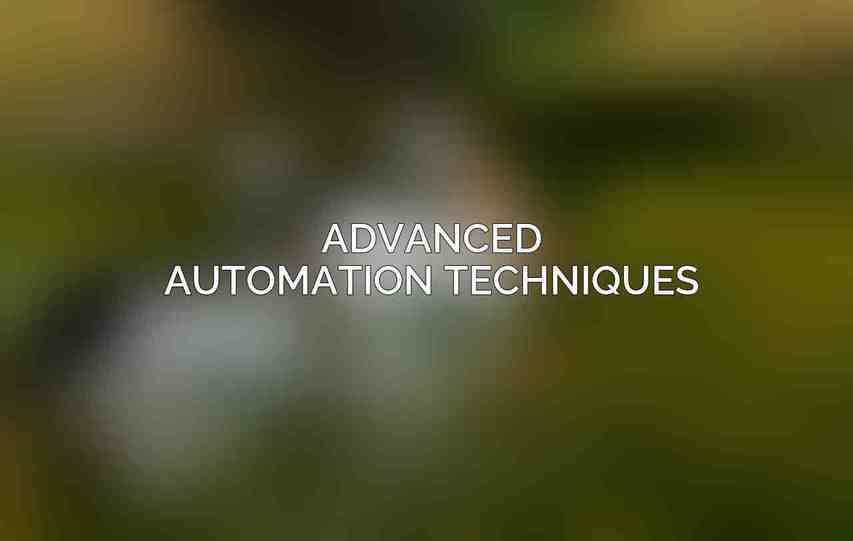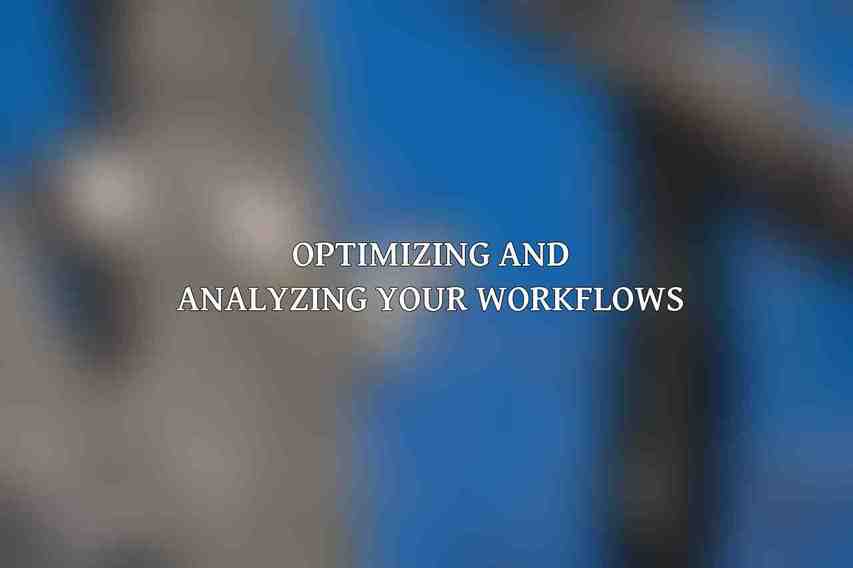Automation workflows in ConvertKit are sequences of automated actions that help streamline marketing processes, personalize customer experiences, and increase conversion rates. By defining triggers and setting up actions, businesses can create personalized and targeted communication with their subscribers. This level of automation saves time, ensures consistency, and enhances engagement with the audience.
The benefits of using ConvertKit automation workflows are substantial. First, they streamline marketing processes by automating repetitive tasks, allowing businesses to focus on creating valuable content and strategies. Secondly, automation workflows enable the personalization of customer experiences by delivering the right message to the right people at the right time. Lastly, these workflows help increase conversion rates by nurturing leads through a tailored journey based on their interactions with the brand.
| Feature | Description | ||||||||||||||||||||||||||||||||||||||||||||||||||||||||||||||||||||||||||||||||||||||||||||||||||
|---|---|---|---|---|---|---|---|---|---|---|---|---|---|---|---|---|---|---|---|---|---|---|---|---|---|---|---|---|---|---|---|---|---|---|---|---|---|---|---|---|---|---|---|---|---|---|---|---|---|---|---|---|---|---|---|---|---|---|---|---|---|---|---|---|---|---|---|---|---|---|---|---|---|---|---|---|---|---|---|---|---|---|---|---|---|---|---|---|---|---|---|---|---|---|---|---|---|---|---|
| Audience Targeting | Create highly targeted email campaigns based on subscriber behavior, demographics, and interests. | ||||||||||||||||||||||||||||||||||||||||||||||||||||||||||||||||||||||||||||||||||||||||||||||||||
| Segmentation | Divide your audience into smaller, more targeted segments to send tailored content. | ||||||||||||||||||||||||||||||||||||||||||||||||||||||||||||||||||||||||||||||||||||||||||||||||||
| Automation Workflows | Set up automated email sequences that trigger based on specific actions or events. | ||||||||||||||||||||||||||||||||||||||||||||||||||||||||||||||||||||||||||||||||||||||||||||||||||
| Visual Workflow Builder | Easily design and manage your automation workflows using a drag-and-drop interface. | ||||||||||||||||||||||||||||||||||||||||||||||||||||||||||||||||||||||||||||||||||||||||||||||||||
| Email Templates | Choose from a library of pre-designed email templates or create your own custom templates. | ||||||||||||||||||||||||||||||||||||||||||||||||||||||||||||||||||||||||||||||||||||||||||||||||||
| Landing Page Builder | Create high-converting landing pages to capture leads and grow your audience. | ||||||||||||||||||||||||||||||||||||||||||||||||||||||||||||||||||||||||||||||||||||||||||||||||||
| Form Builder | Create customized forms to collect email addresses and other subscriber data. | ||||||||||||||||||||||||||||||||||||||||||||||||||||||||||||||||||||||||||||||||||||||||||||||||||
| Reporting and Analytics | Track the performance of your email campaigns and automation workflows. | ||||||||||||||||||||||||||||||||||||||||||||||||||||||||||||||||||||||||||||||||||||||||||||||||||
| Subscriber Management | Manage your subscribers and segment them into different lists. | ||||||||||||||||||||||||||||||||||||||||||||||||||||||||||||||||||||||||||||||||||||||||||||||||||
| Integrations | Connect ConvertKit with other tools and platforms, such as WordPress, WooCommerce, and Salesforce. | ||||||||||||||||||||||||||||||||||||||||||||||||||||||||||||||||||||||||||||||||||||||||||||||||||
| Pricing | Starting at $29/month, with different plans available to suit your needs. | ||||||||||||||||||||||||||||||||||||||||||||||||||||||||||||||||||||||||||||||||||||||||||||||||||
| Free Trial | Try ConvertKit for free for 14 days | ||||||||||||||||||||||||||||||||||||||||||||||||||||||||||||||||||||||||||||||||||||||||||||||||||
| Visit ConvertKit | |||||||||||||||||||||||||||||||||||||||||||||||||||||||||||||||||||||||||||||||||||||||||||||||||||
Creating Your First Workflow
To create your first automation workflow in ConvertKit, you will utilize the intuitive Workflow Builder tool. This visual editor allows you to map out your workflow step by step, making it easy to understand and modify. The process typically involves defining the starting point of your workflow, setting triggers that initiate actions, and adding various actions such as tagging subscribers, sending automated emails, and integrating with other apps like Shopify.
In Step 1 of creating a workflow, you will define your workflow’s starting point by selecting triggers that prompt the workflow to begin. Triggers could include actions like a new subscriber joining your list or a subscriber opening a specific email. These triggers set the automation in motion, ensuring that the right actions are taken based on subscriber behavior.
Automating Common Customer Journeys

Automating common customer journeys using ConvertKit automation workflows is highly effective in engaging subscribers and moving them through the sales funnel. One common journey is the Welcome Series, where you can create a warm welcome message for new subscribers and provide valuable content and resources to introduce them to your brand.
Another vital automation workflow is Nurture Sequences, where you drip-feed educational content to subscribers, helping build relationships and increase engagement over time. Lead Magnet Delivery workflows automatically send promised lead magnets to subscribers and track their interests using tags. Re-Engagement Campaigns are also crucial, identifying inactive subscribers and sending re-engagement emails with exclusive offers to win them back.
Advanced Automation Techniques

For more advanced automation techniques, ConvertKit allows users to personalize content using segments based on demographics, interests, and behaviors. This customization enables businesses to send tailored emails to different segments, maximizing relevance. Adding time delays in workflows helps control the timing of emails and actions, preventing overwhelming subscribers and ensuring a smooth flow of communication.
Conditional logic is another powerful feature that allows for branching in workflows based on subscriber actions. This customization enables personalized workflow experiences based on how subscribers interact with the emails and content they receive. By setting up conditional logic, businesses can tailor communication to individual subscriber responses.
Optimizing and Analyzing Your Workflows

To ensure the effectiveness of your automation workflows, it is crucial to track performance metrics such as open rates, click-through rates, and conversions. By analyzing these metrics, businesses can optimize their workflows by making adjustments to improve performance and conducting A/B testing to identify the best-performing options. Monitoring and troubleshooting workflows regularly help identify and resolve any potential issues that may arise, ensuring smooth operation and maximum efficiency.
Additional Resources
For additional support and inspiration, ConvertKit offers an Automation Workflow Gallery where users can explore pre-built automation workflows for various scenarios. Additionally, ConvertKit’s Help Center provides comprehensive resources, guides, and tutorials to help users make the most of their automation workflows and troubleshoot any issues they may encounter.
mastering ConvertKit automation workflows empowers businesses to create personalized experiences, nurture leads effectively, and improve conversion rates through targeted and timely communication. By following this step-by-step guide and leveraging ConvertKit’s features, businesses can automate their marketing processes efficiently and engage their audience in a meaningful way.
Frequently Asked Questions
What is ConvertKit Automation Workflows?
ConvertKit Automation Workflows is a feature that allows you to create automated sequences of emails and actions based on the behavior of your subscribers.
How do I create a new automation workflow in ConvertKit?
To create a new automation workflow in ConvertKit, go to the Automations tab in your ConvertKit account, click on ‘New Automation’ and follow the prompts to set up your workflow.
Can I segment my subscribers in ConvertKit Automation Workflows?
Yes, you can segment your subscribers in ConvertKit Automation Workflows based on their actions, tags, and other criteria to send targeted and personalized emails.
What types of triggers can I use in ConvertKit Automation Workflows?
You can use triggers such as ‘Subscribed to a form’, ‘Clicked link’, ‘Tag added’, and more to start your automation workflows in ConvertKit.
How can I track the performance of my automation workflows in ConvertKit?
You can track the performance of your automation workflows in ConvertKit by monitoring metrics such as open rates, click-through rates, and conversions for each email in the sequence.

